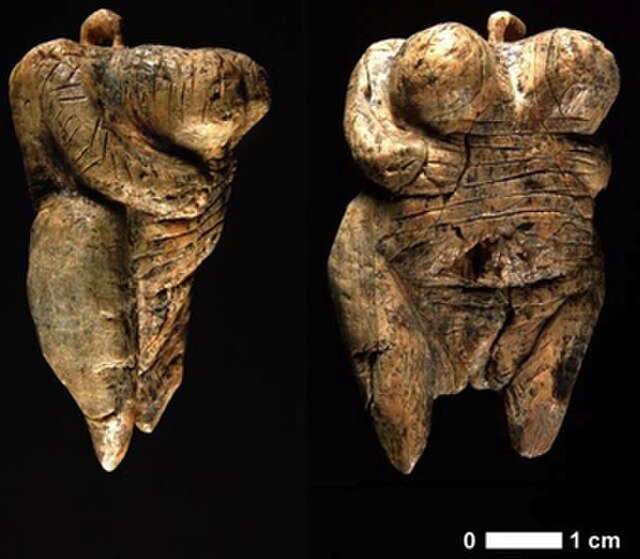A bust is a sculpted or cast representation of the upper part of the human body, depicting a person's head and neck, and a variable portion of the chest and shoulders. The piece is normally supported by a plinth. The bust is generally a portrait intended to record the appearance of an individual, but may sometimes represent a type. They may be of any medium used for sculpture, such as marble, bronze, terracotta, plaster, wax or wood.
Bust of Nefertiti; c. 1345 BC; limestone and plaster; height: 48 cm, width: 20 cm; Neues Museum, Berlin , Germany.
Lady of Elche (limestone, Iberian, 4th century BC)
Pericles with the Corinthian helmet (marble, Roman after a Greek original, c. 430 BC)
Bronze bust of Lucius Junius Brutus, the Capitoline Brutus (late 4th century BC to early 3rd century BC)
Sculpture is the branch of the visual arts that operates in three dimensions. Sculpture is the three-dimensional art work which is physically presented in the dimensions of height, width and depth. It is one of the plastic arts. Durable sculptural processes originally used carving and modelling, in stone, metal, ceramics, wood and other materials but, since Modernism, there has been almost complete freedom of materials and process. A wide variety of materials may be worked by removal such as carving, assembled by welding or modelling, or moulded or cast.
Venus of Hohle Fels, Germany, oldest known sculpture of a human being, 42.000–40.000 BP
Dying Gaul, or The Capitoline Gaul, a Roman marble copy of a Hellenistic work of the late 3rd century BCE, Capitoline Museums, Rome
Assyrian lamassu gate guardian from Khorsabad, c. 800–721 BCE
Michelangelo's Moses, (c. 1513–1515), San Pietro in Vincoli, Rome, for the tomb of Pope Julius II








